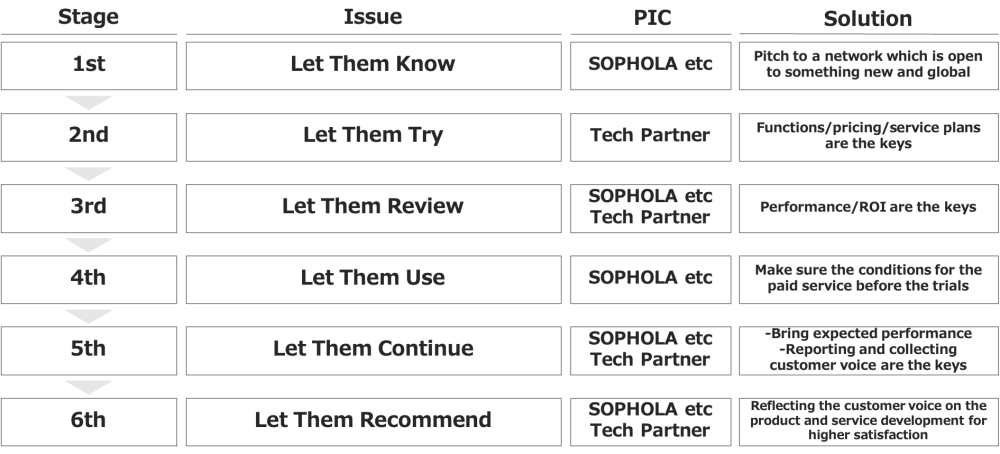Empower and Revitalize Japan for Next Generation
Enjoy our initiatives and ideas that embody SOPHOLA's Vision, Mission and Values.
We will update our employees' daily lives and thoughts so that you can understand the SOPHOLA culture.
6 Success Steps for Global Digital Marketing SaaS Businesses in Japan
In my previous blog post, I wrote about the reasons why we are working on the world’s most advanced digital marketing SaaS business. This time, before I get into the secret of m19’s success, I have summarized the steps on the road to success in such SaaS business in Japan! We would be very happy if you could read the rest of this article, not only from our partners, but also from those who would like to help us expand our horizons and work together with us to raise the level of digital marketing technology in Japan.
Over the past 6 years, from my previous position at Rakuten Marketing to the present, I have tested about 23 SaaS products from overseas for the purpose of entering the Japanese market. Based on this experience, I believe that the following six steps are necessary for the success of any global SaaS business in Japan.

The first barrier is to let them know us. Since major advertisers and agencies tend to prefer to use proven domestic digital marketing SaaS or in-house products, we and our sales partners are trying to approach as many advertisers and agencies as possible who are interested in other advanced global products. We believe there is room to do better in this area, so we are experimenting with various sales and promotional channels this year.
The second barrier will be letting them try the product. In terms of fees, I think the fees for such global products tend to be slightly to significantly higher than domestic digital marketing SaaS, partly because of the ongoing inflation in Western countries. On the other hand, in terms of functionality, there are many advanced and unique features and strengths that are not found in domestic ones, which can greatly contribute to marketing performance and man-hour reduction. Finally, in terms of plans, it is common to have a free trial of one week to one month, which can be used to determine a single month to annual contract. This second barrier is highly dependent on the technical capabilities and service design possessed by the tech partner, and is therefore considered very carefully when selecting a partner.
The next third barrier is to let them review it. “Did the client (lead) get the expected performance (including man-hour savings)?” and “Was it cost-effective?” are the typical questions we go through with our leads after each trial. If the product has many system bugs or is of poor quality, we will not only be out of the game right after it, but it will also have a major negative impact on the reputation of our company, a tech partner, and a sales partner. Since there are bugs that do not appear during proof of concept, it is necessary to share with the lead in advance what kind of bugs are expected and to coordinate with the tech partner on the importance of debugging in the Japanese market.
The fourth barrier, “letting them use (the paid service),” can be overcome through relatively smoothly if we have passed the first three. However, some leads may unfortunately not keep their prior promises, so we try to counter this by specifying the conditions for signing a contract in the trial application form.
Then, after the contract is signed, the fifth barrier that appears is letting them continue. It is first important that the system is set up correctly in the manner recommended by the tech partner and that it continues to perform beyond expectations. The second point is to make sure that the client understands the results and appreciates the value of the product. At the same time, it is important to regularly ask the client, “Are there any areas for further improvement in the product or service? This is a key point to increase client satisfaction with our company, our tech partners, and our sales partners.
The sixth and final step is to let them recommend. If we are able to properly apply the aforementioned room for improvement to product and service development, client satisfaction will gradually increase, and they will naturally recommend us to other clients and other proposed clients. On the other hand, if this part of the process does not happen, we are leaving room for improvement as it is, and the business will not grow.
Of the six barriers, the understanding and cooperation of the tech partner is essential in four of them. Overcoming the four barriers very well lies in the main reasons why m19 has been so successful. I will continue to explain the details in the next blog!
Masaki “Mark” Iino
Founder & CEO
SOPHOLA, Inc
